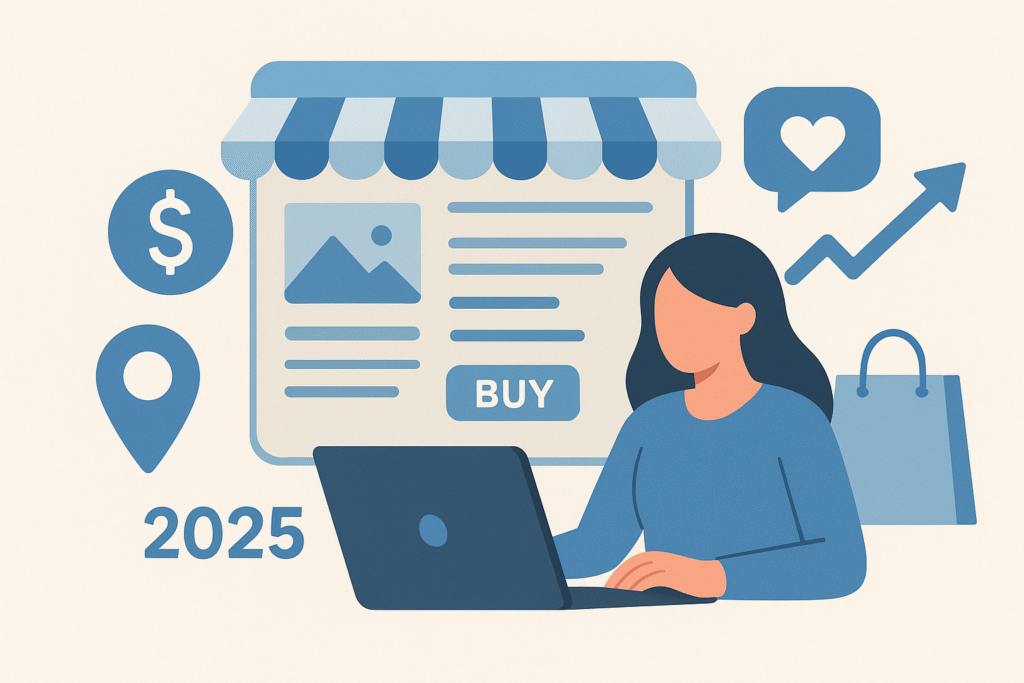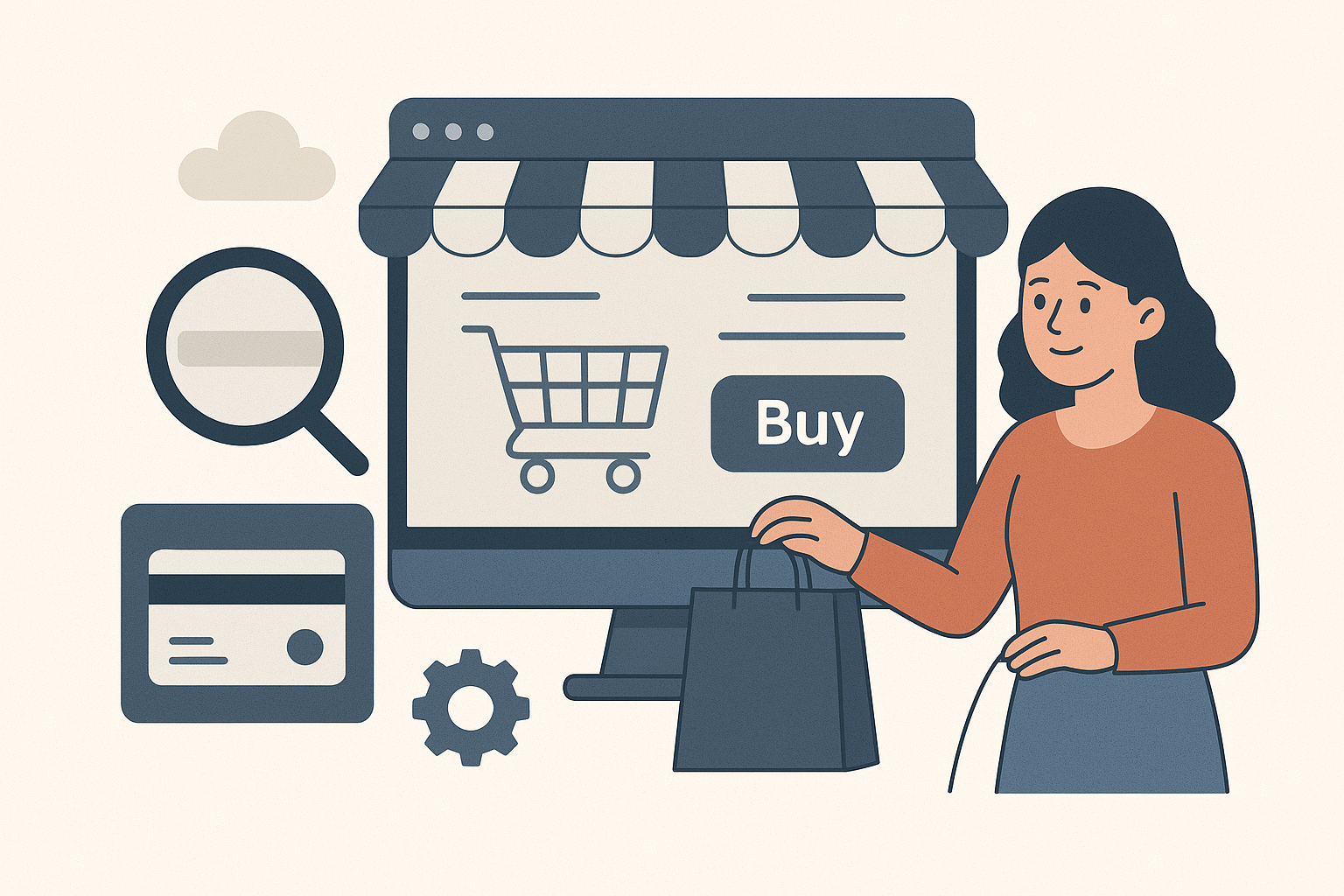Unlock powerful websites and sales funnels built to convert, with zero upfront costs. Let’s bring your vision to life and drive real results together.

E-Commerce has transformed the way the world shops. From a small home-based business selling handmade crafts to global brands fulfilling millions of orders every month—online stores have become the backbone of modern retail. Whether you’re an entrepreneur looking to launch your first online store or an established business planning to expand into online shopping, understanding the fundamentals of E-Commerce is crucial.
The global E-Commerce market continues to grow at record speed. With more customers choosing convenience, variety, and digital experiences, online stores are now no longer optional—they are necessary. For beginners, however, the process of creating an E-Commerce business can feel overwhelming. You might be wondering: How do I build a store? Which platform is the best? How do I drive traffic? How do I get sales?
This complete beginner-friendly guide answers all of these questions and more. Backed by industry best practices and simplified explanations, this guide is designed to help anyone—from small business owners to aspiring online sellers—navigate the world of online shopping with confidence.
E-Commerce, or electronic commerce, refers to buying and selling goods and services online. It includes everything from online shopping and digital payments to product management, logistics, and customer communication.
E-Commerce isn’t limited to physical products—digital products, memberships, consultations, and services are also sold online.
E-Commerce is no longer just an alternative to physical retail—it is the primary way many consumers shop. In 2025 and beyond, several trends continue to push E-Commerce growth:
Your store is accessible worldwide, 24/7, without physical boundaries.
No rent, no staffing overhead, no huge storage spaces required.
Most shoppers prefer online shopping due to speed, convenience, and variety.
Online stores provide detailed analytics, helping you understand customer behavior and optimize for better sales.
Tools like product recommendation engines, chatbots, and automated marketing are easier and cheaper than ever.
E-Commerce empowers even small businesses to compete with large brands—by offering better experiences and personalization.

A successful E-Commerce website requires more than just product listings. Below are the core elements that define a high-performing online store:
Your website is your shop. It must be easy to navigate, mobile-responsive, and visually appealing.
Common features include:
Key Point: A slow or confusing website leads to abandoned carts and lost sales.
Customers must feel safe when making payments. Offer trusted payment options like:
Trust builds conversions.
Each product page should include:
Good product pages directly improve online shopping conversions.
Avoid overselling, delays, or confusion. Use automated tools to manage:
Automation saves time and improves customer satisfaction.
Even the best online store fails without traffic. Focus on:
AppleDew specializes in helping brands optimize these areas for maximum visibility.
Three top beginner-friendly platforms include:
A domain reflects your brand identity, while hosting ensures your site stays online.
A good design should:
Include:
Configure:
Before launch:
Marketing is the engine that fuels E-Commerce success.
Use:
Beginners often struggle due to avoidable errors. Here are the most common ones:
Slow sites kill conversions.
Images are the first impression—make them count.
A store without traffic = no sales.
A long checkout process increases cart abandonment.
Transparency builds trust.
Most online shopping happens on mobile phones.
Lifestyle images improve engagement and convince customers to buy.
Email remains one of the highest ROI channels in E-Commerce.
Reviews boost trust and help new customers decide faster.
Increase average order value naturally.
Situation: A small handmade jewelry brand wanted global reach.
Approach: They built a Shopify store and invested in product photography, SEO, and Instagram marketing.
Results: 350% increase in monthly sales within 4 months.
Lesson: Great visuals + strong marketing = rapid online growth.
Situation: A local clothing retailer needed to expand digitally.
Approach: AppleDew helped them redesign their E-Commerce website and optimize product pages.
Results: 2.8x increase in conversions within 60 days.
Lesson: Clean design and user-friendly navigation transform customer experience.
E-Commerce is the buying and selling of products or services online.
Costs vary depending on platform, design, and features—but beginners can start for as little as $50–$100 per month.
Shopify is the easiest, while WooCommerce is best for customization.
Through SEO, social media marketing, paid ads, and content marketing.
Fashion, beauty, electronics, handmade products, and digital downloads are among the top categories.
Starting an E-Commerce business is more accessible today than ever before. Whether you’re launching a brand-new concept or taking your existing store online, the opportunities are limitless. With the right tools, strategy, and guidance, anyone can build a successful online store and reach customers globally.
If you need professional help designing, developing, or marketing your online store, AppleDew is here to support you every step of the way.
👉 Contact AppleDew today and launch your online store with confidence.